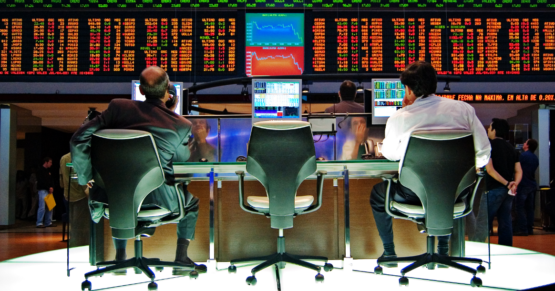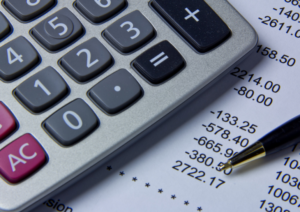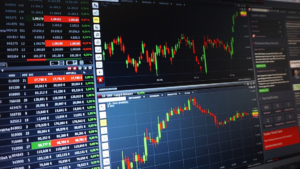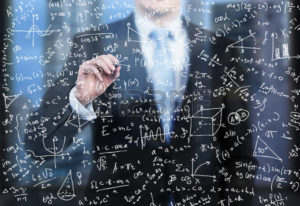Stock Screener: What’s Your Criteria?
![]() The article was written by Jacob Saphir, a Financial Analyst at I Know First.
The article was written by Jacob Saphir, a Financial Analyst at I Know First.
Stock Screener
“An inner process stands in need of outward criteria.” Ludwig Wittgenstein
Summary:
- Stocks Picks Based on Fundamental Analysis
- Technical Analysis Based on the past but can provide some indications of the future
- I Know First Algorithm and Robo Advisor
Background:
 What’s your criteria? We judge everything from the clothes worn, to how we perceive others upon meeting, to the very strategies used towards investing. Every investor has a criteria of what they look for in potential investments. Given the unpredictability of the stock market, some may act on impulse without carefully considering its risk and rewards. So, what do investors look for? How do they screen stocks? Some may find the information available too overwhelming. Therefore, some may follow stock picks from notable investors, such as: Warren Buffet. He uses fundamental analysis to screen for stocks. Furthermore, this approach seeks to calculate the intrinsic value of a stock. Others may resort to technical analysis. This analysis focuses on the study of previous stock price and volume traded to forecast the future. Whichever strategy is used, one who possess a solid strategy stands to make a profit.
What’s your criteria? We judge everything from the clothes worn, to how we perceive others upon meeting, to the very strategies used towards investing. Every investor has a criteria of what they look for in potential investments. Given the unpredictability of the stock market, some may act on impulse without carefully considering its risk and rewards. So, what do investors look for? How do they screen stocks? Some may find the information available too overwhelming. Therefore, some may follow stock picks from notable investors, such as: Warren Buffet. He uses fundamental analysis to screen for stocks. Furthermore, this approach seeks to calculate the intrinsic value of a stock. Others may resort to technical analysis. This analysis focuses on the study of previous stock price and volume traded to forecast the future. Whichever strategy is used, one who possess a solid strategy stands to make a profit.
Fundamental Analysis and Warren Buffet
Fundamental analysis seeks to find a stock’s intrinsic value. The goal is to invest in companies with a higher intrinsic value over market value. Much like going to a store, looking for items at sales price. This approach consists of reviewing financial data and measured ratios, such as: price to book, price to earnings, and more. Warren Buffet reviews these financial data and screens the stocks based on three categories: defensive, enterprising, and net current asset value. The criteria can be found in Graham’s Stock Grades.
Let’s review an example among Buffet’s trade. Throughout the year 2016, Warren Buffet’s began purchasing over $1 billion of Apple shares. I Know First’s previous article explains why Buffet bought Apple. Although the stock failed to meet all the criteria in the defensive category, Buffet pursued the stock. As a result of his decision, his investment has risen by over 30% since purchasing the stock.
Despite Buffet’s success, maybe not everyone agrees with his criteria. Rather than mimic, others may have their own criteria. Some may place more emphasis in a company’s liquidity to pay debt, such as current ratio. The company’s debt is divided by the company’s current assets to current total liabilities. The higher the ratio, the more favorable the company’s liquidity. Perhaps, other investors may favor valuation ratios, such as price to sales. Stanford Professor of Accounting, Joseph Pitroski, developed his own scoring method, Pitroski Score. He scores stocks giving each financial ratios or criteria awarded by a number. With a high enough score, the stock may be worthwhile to invest.
However, not all strategies will work in every given day, this is where technical analysis comes into consideration.
Technical Analysis
Yesterday was history, tomorrow is a mystery. Although we may not be able to predict the future, the past can provide indications of the future. Technical analysis traders rely on previous data to forecast the market. While traders review past price performance, a series of chart patterns may appear. Each chart pattern indicates a bullish trend, a bearish trend, or hint a reversal. Therefore, traders will use these patterns to either enter or exit positions. Many day traders analyze the stocks movement within a day by using Japanese candlestick. Each bar indicates on a given day or time period, the price of stock opened, closed, and range. The investor will also study the volume traded. Sometimes, the more volume traded, the more recognition the company will receive in the market. More publication in the market, could even spur more investors, thus leading to increase in stock volatility.
I Know First Robo Advisor
The market does not always react logically. First of all, not all information released to the public reflects the stock’s price. Bear in mind, humans are not immune from making judgments based on their emotions. Thus creating opportunities or forecasting its future. Can we change it? In a new development of trading, now more than ever, computers and artificial intelligence are making a significant amount of trade. In a slideshow, co-founder Dr. Roitman explains I Know First’s algorithm and how the utilization of machine learning and artificial intelligence. As a robo advisor utilizing these technology, human emotion is removed. Therefore preventing investors from potentially making costly mistakes, and the technology producing valuable forecasts. According to a previous I Know First article, 60-70% of all trade volume in the US equity market are from utilizing algorithms and AI.
I Know First Algorithm Heatmap Explanation
The sign of the signal tells in which direction the asset price is expected to go (positive = to go up = Long, negative = to drop = Short position), the signal strength is related to the magnitude of the expected return and is used for ranking purposes of the investment opportunities. Hence, the higher the signal strength, the more confidence in its forecast.
Predictability is the actual fitness function being optimized every day, and can be simplified explained as the correlation based quality measure of the signal. This is a unique indicator of the I Know First algorithm. Thus allowing users to separate and focus on the most predictable assets according to the algorithm. Ranging between -1 and 1, one should focus on predictability levels significantly above, in order to be confident in the signal. In conclusion, the higher the predictability rate, the higher its probability.



















